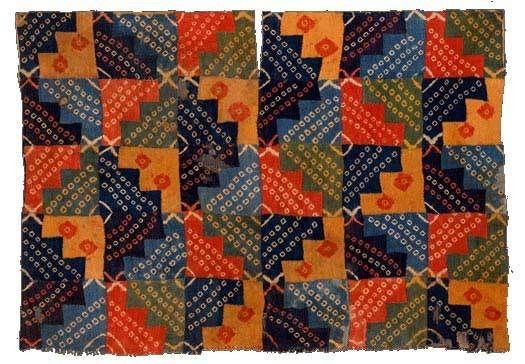Textiles and the Triplett Sisters
Huari Textiles of Ancient Peru

I’m always interested in learning more about historical patchwork and natural dyes. Sometimes when you are researching one thing, you are fortunate enough to find something unexpected, which of course for me, means learning more about it. My discovery was a Huari textile from about 600-1000 that was made of patchwork. So far, it is the oldest piece of patchwork I’ve seen, and it was tied dyed with indigo! (A double score on the interest scale for me!)

Huari (Wari) was a Middle Horizon civilization that flourished in the south-central Andes from 500-1000 AD. It is the coastal area of modern-day Peru where a series of Huari archaeological ruins is located. They had an extensive history of artistic expression in metalwork, ceramics, and particularly textiles.

The surviving textile examples are primarily tapestries, hats, and tunics. All are filled with color and many are patchwork. Although a chemical analysis would be required to confirm the dye used on each textile, it is likely that the two shades of blue were indigo (one dyed longer or more dips to get the darker color. Cochineal (the bug that grows on South American cacti) is the bright red. Achancaray and Chapi plants (both a relative of Old World madder) for the other not so intense colors of red. Several trees and barks specific to the area account for the oranges and yellows. I’m so grateful to have learned more about these amazing fiber artists that went before us!



